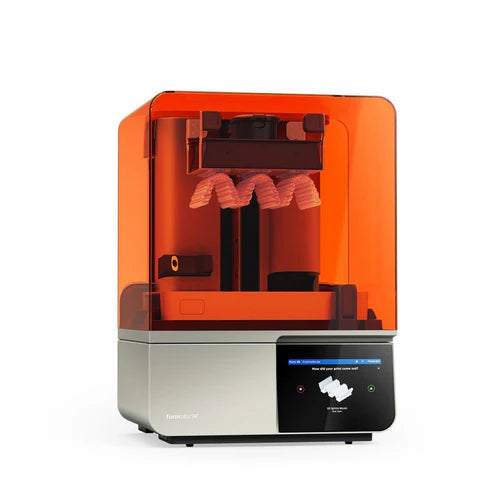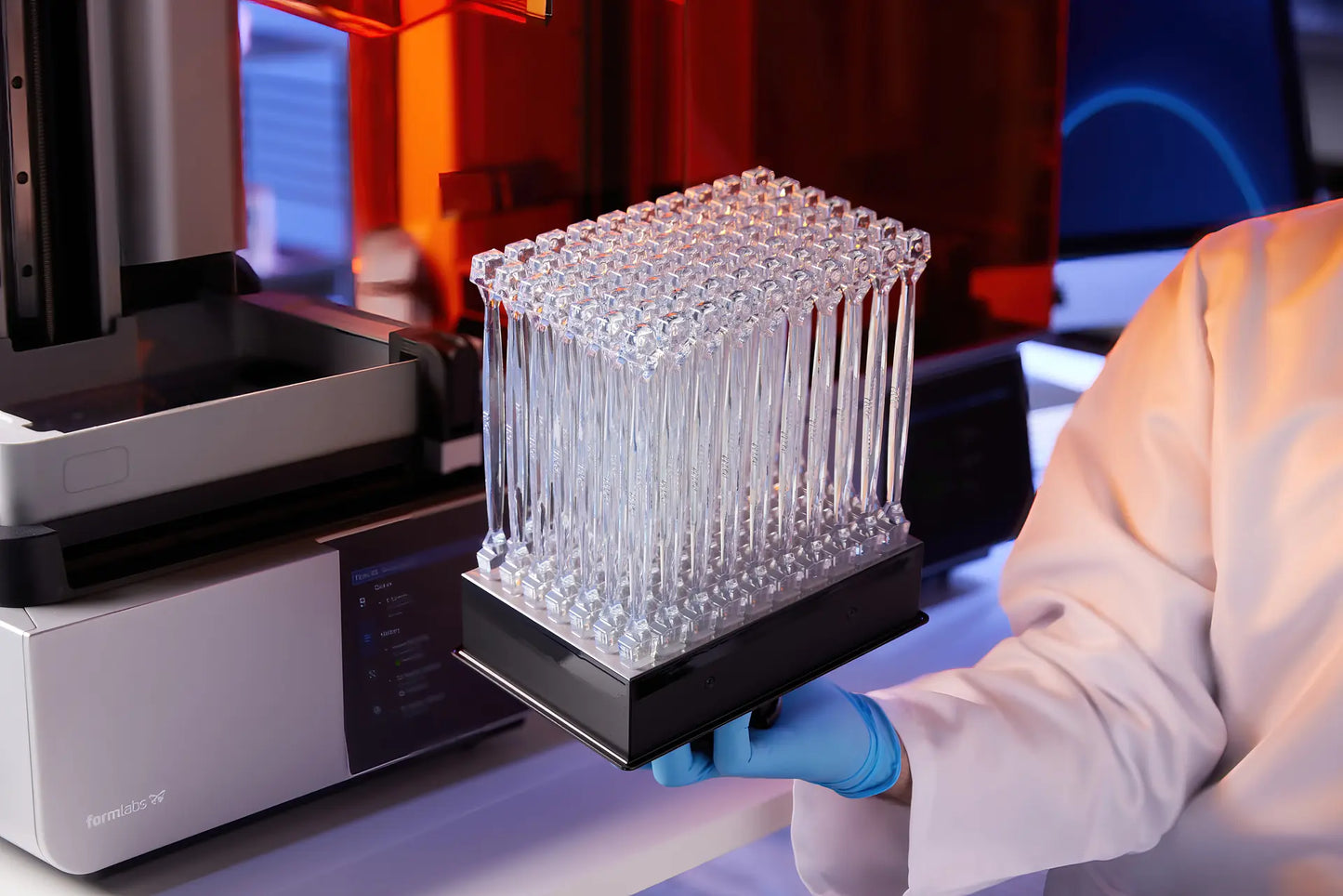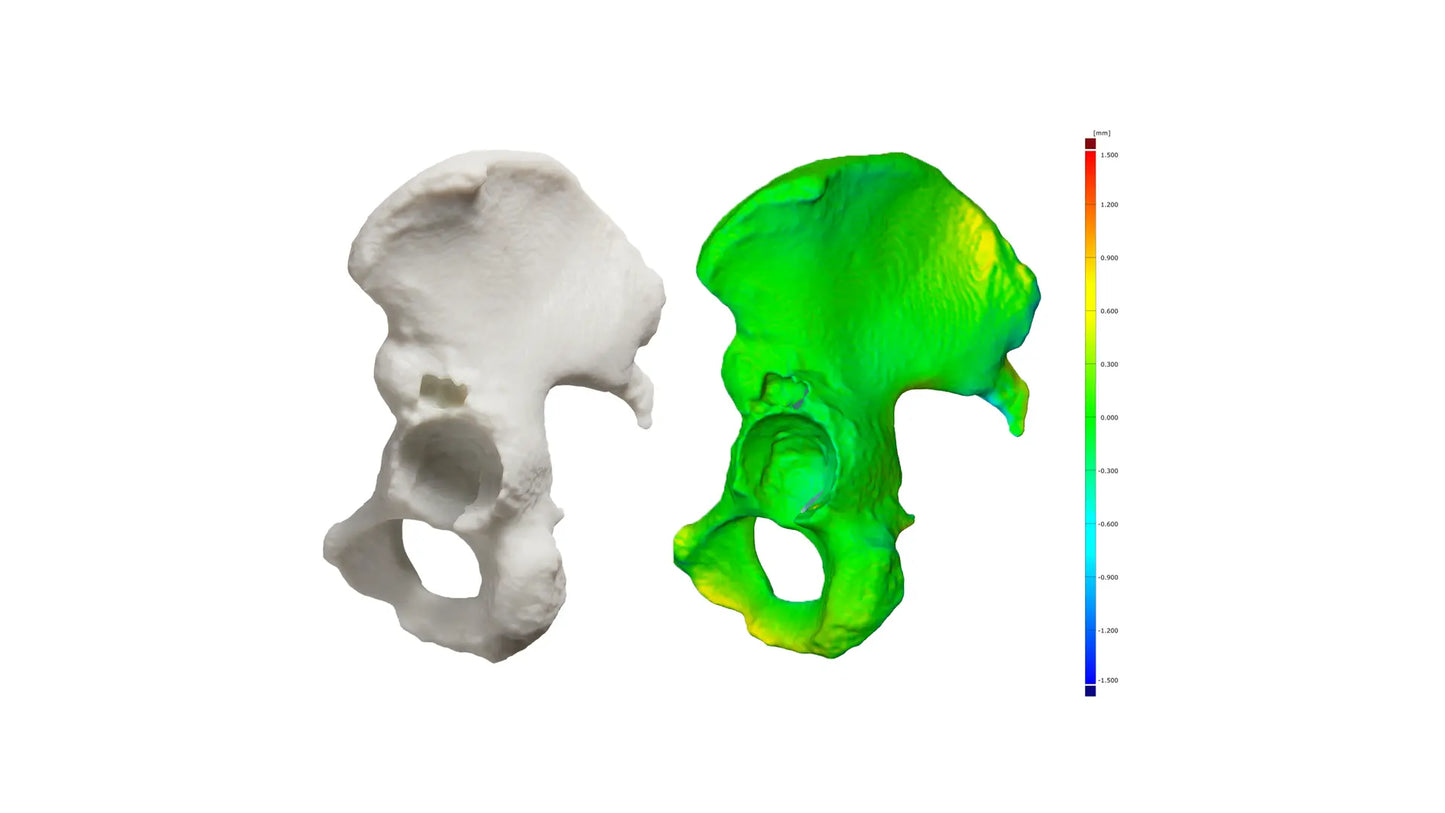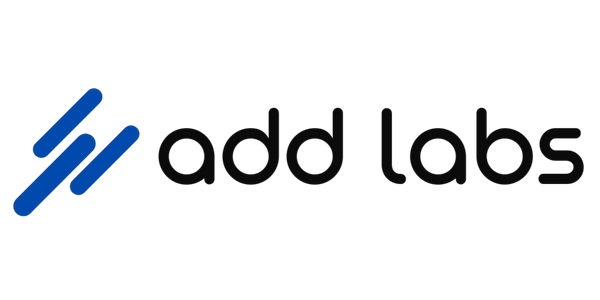


Blazing Speed Meets Surgical Precision
Create bio-compatible, sterilisable anatomical models and medical devices fast, with easy workflows, leading reliability, versatile materials, and stunning part quality using Form 4B, a blazing fast medical 3D printer that offers the most diverse materials library for healthcare.
Ideal for:
- Small and medium parts requiring bio-compatibility and sterilization compatibility
- Medical device prototypes, jigs, fixtures, moulds and end-use parts
- Patient-specific anatomical models and surgical instruments
- Visual aids for diagnosis and education
- Surgical planning models for diagnostic use in FDA-cleared workflows
Quality you can trust when it matters most. No compromises.
Formlabs' Form 4 resin 3D printer and its biocompatible version, Form 4B, are powered by our next-generation Low Force Display™ (LFD) Print Engine that turns liquid resin into printed parts.
LFD Print Engine features six advanced subsystems to set the new standard for blazing fast speed, unmatched reliability, stunning print quality, and performance materials.
What Is Low Force Display™ Technology?
Form 4 is powered by our next-generation Low Force Display™ (LFD) Print Engine. LFD redefines the industry performance standard and delivers unmatched reliability, print speed, print quality, dimensional accuracy, and materials versatility in one printer.
LFD is built on Formlabs’ previous Low Force Stereolithography™ (LFS) Print Engine. Since 2011, over 50,000 companies have relied upon more than 130,000 Formlabs 3D printers to produce over 400 million performance parts.
Streamlined User Experience
Form 4 builds off the intuitive user experience of Form 3+. With Wi-Fi, ethernet, and USB connectivity, plus power switches, it’s easier than ever to control your printer no matter your business needs. Additional updates mean Form 4 is more autonomous and intelligent, freeing up user time for higher-value tasks.
Interact with a more intuitive Touch UI via a seven-inch touchscreen. On-screen preventative maintenance reminders, print status information, and printer readiness information make printing easier and more intuitive than ever before.
Say goodbye to post-it notes on printers with an always-visible printer name and status. After five minutes, a time-out screen will display the name, resin, and printer readiness in larger letters, so you can tell at a glance what the printer is and if it’s ready to go.
Faster preprint times mean you can typically walk away from Form 4 less than a minute after starting. But, if a printer is ready, no printer interaction is necessary, simply send the print to the printer from your computer, and Form 4 will start printing automatically.
On-screen information includes maintenance reminders and diagnostic tools to keep the printer running smoothly. In the event of an issue, error messages display QR codes that lead to support articles to get you back up and running as quickly as possible.
Exciting new features will continue to be added over time through firmware updates, including the release of additional language options.
Intelligent Control Systems and Integrated Camera
Six onboard control systems precisely measure and maintain the temperature, resin level, print forces, and print status inside Form 4. In addition to the cartridge load cell sensor and conduction heating, Form 4 includes a printer leveling sensor, resin level sensor, integrated Z-axis force sensor, and a camera.
Printer Levelling Sensor: When a Form 4 is plugged in and turned on, the touchscreen will automatically walk you through leveling. Simply follow the screen prompts and adjust the legs of the printer with the provided tool. Leveling the printer ensures the Resin Level Sense system can precisely measure the level of liquid resin throughout a Resin Tank, for consistently accurate prints.
Resin Level Sensor: The resin level sensor measures the exact amount of resin in the Resin Tank and controls the automated resin dispensing system, ensuring consistent resin levels and print performance.
Z-Axis Force Sensor: The Z-axis force sensor measures the forces being exerted on every layer during printing and automatically adjusts Z-axis motion to minimize those forces. This delivers optimal speed, quality, and reliability for any part geometry printed in any material.
Camera: A camera inside the build chamber can take a photo or timelapse video of each completed print and upload it into Dashboard, Formlabs’ printer management software, where print status can be viewed from anywhere. This feature makes remote print monitoring and print history traceability easier than ever. For users wishing to opt out of this feature, the camera can easily be turned off, covered, or removed.
Build Platforms
Two different build platforms are available to optimize printing and easy removal of printed parts. A spare build platform can speed up your workflow and allow for nonstop printing.
The Build Platform has a rigid aluminum surface. Build Platform Flex with patented Quick Release Technology has a flexible print surface that allows you to quickly and easily remove parts without tools in seconds. Build Platform Flex eliminates the risk of damaging your part and streamlines your workflow. It is built with a stainless steel print surface ensuring robust, long-term durability. Save material costs and post-processing time by printing parts directly on the Build Platform Flex.
Blazing Fast: Most prints are within 2 hours
Intuitive: Anyone can learn within 15 minutes
Reliable: Unmatched print success rate
Accurate: Rivals injected moulded parts
Produce stunning parts that always fit, rivalling injection moulded parts





